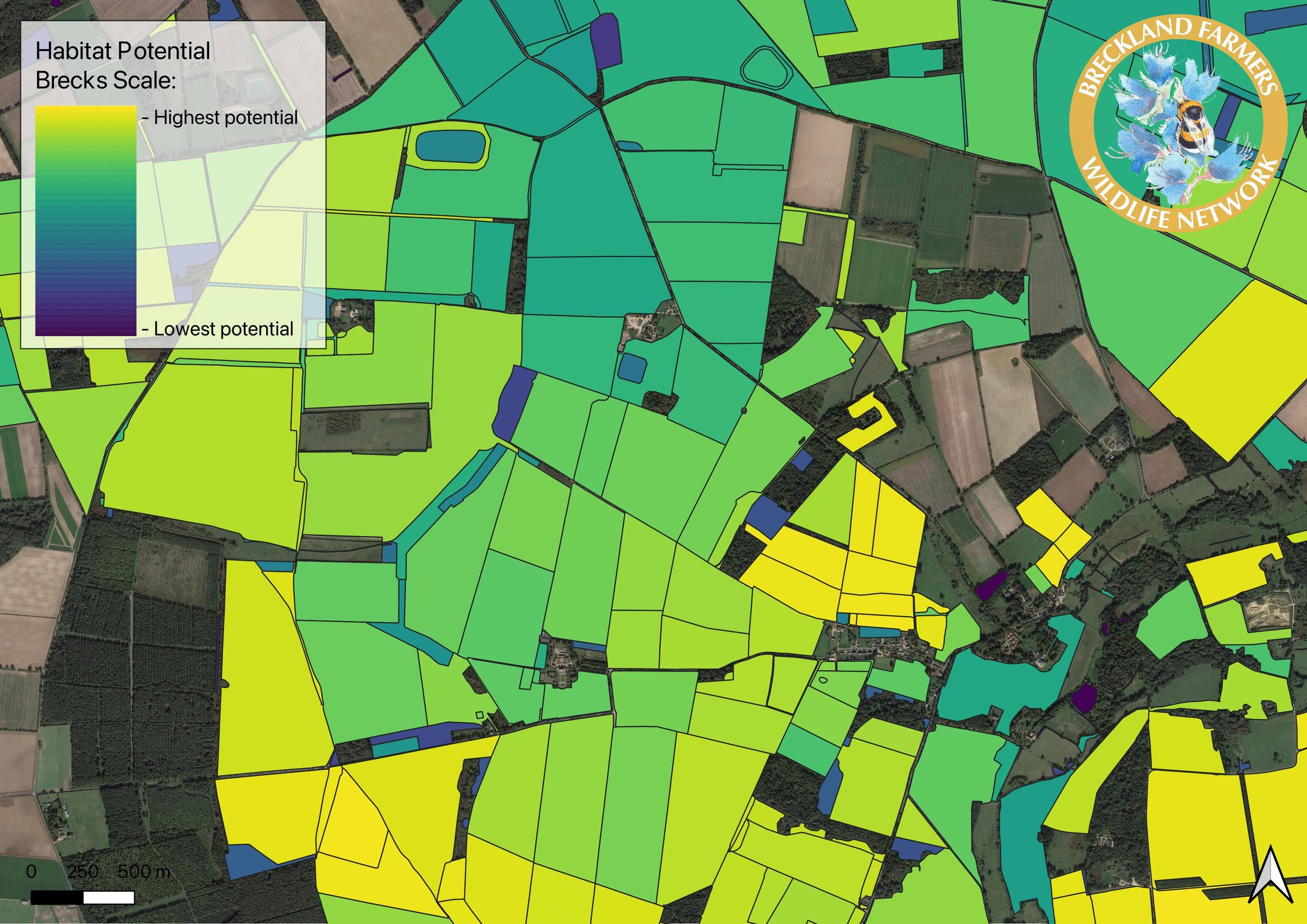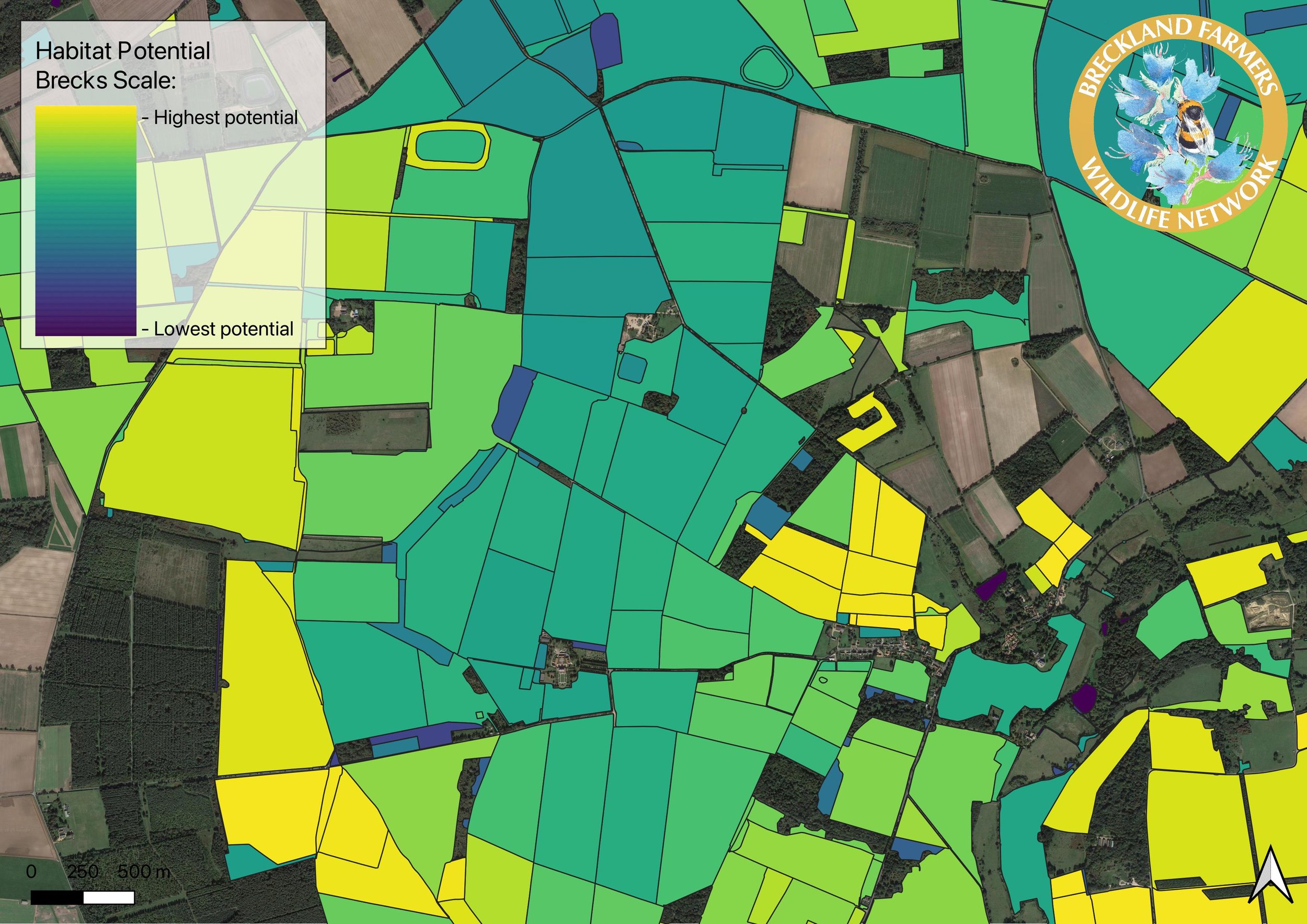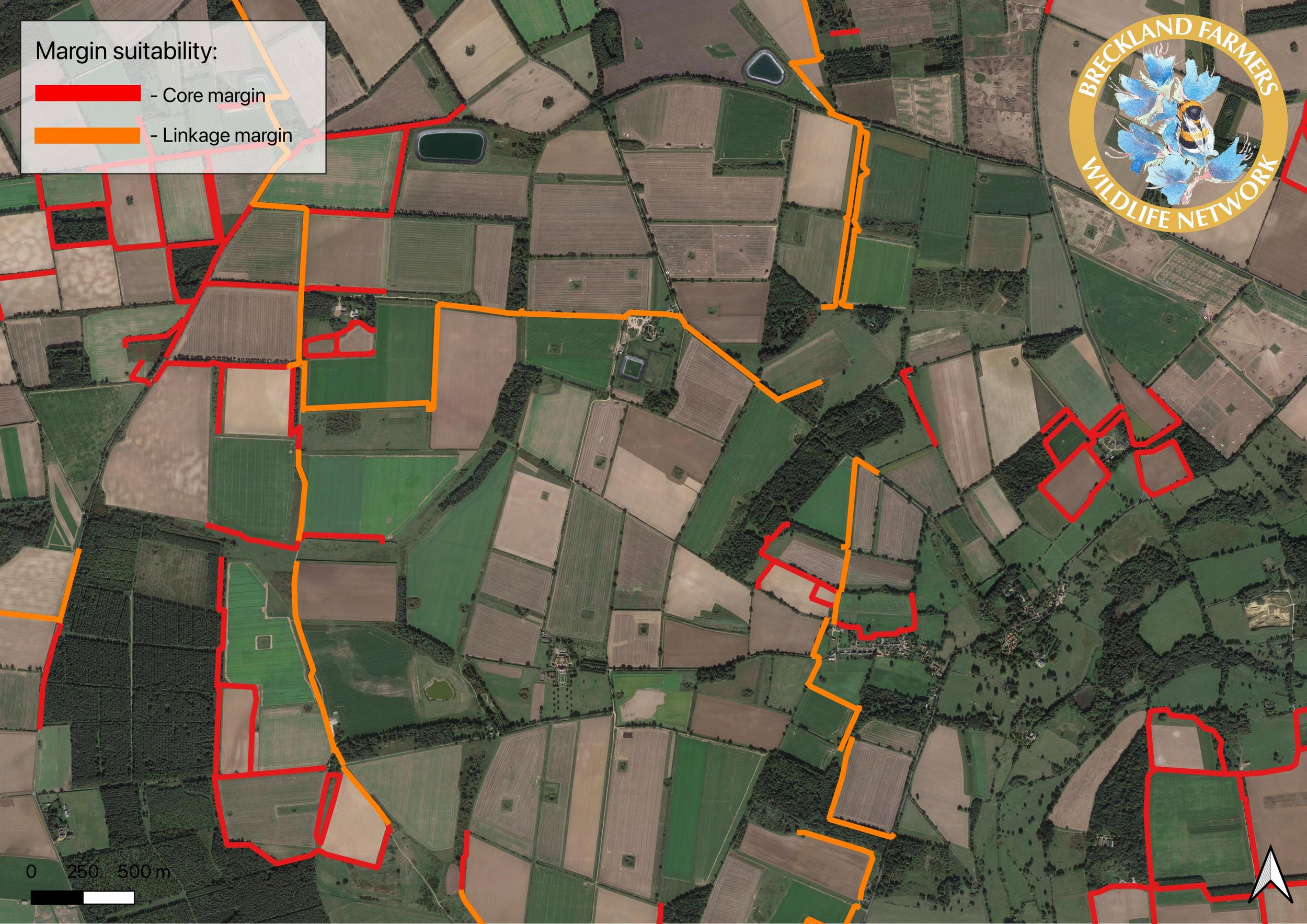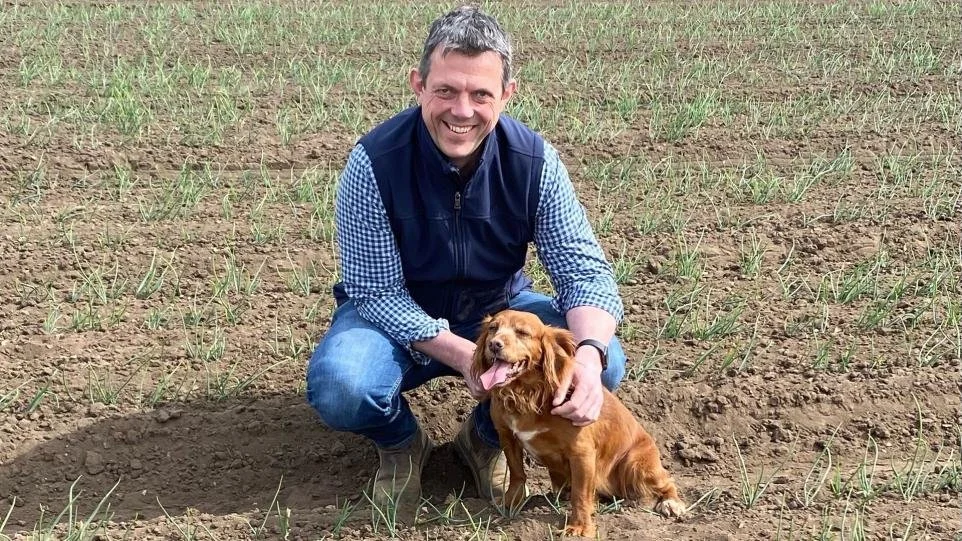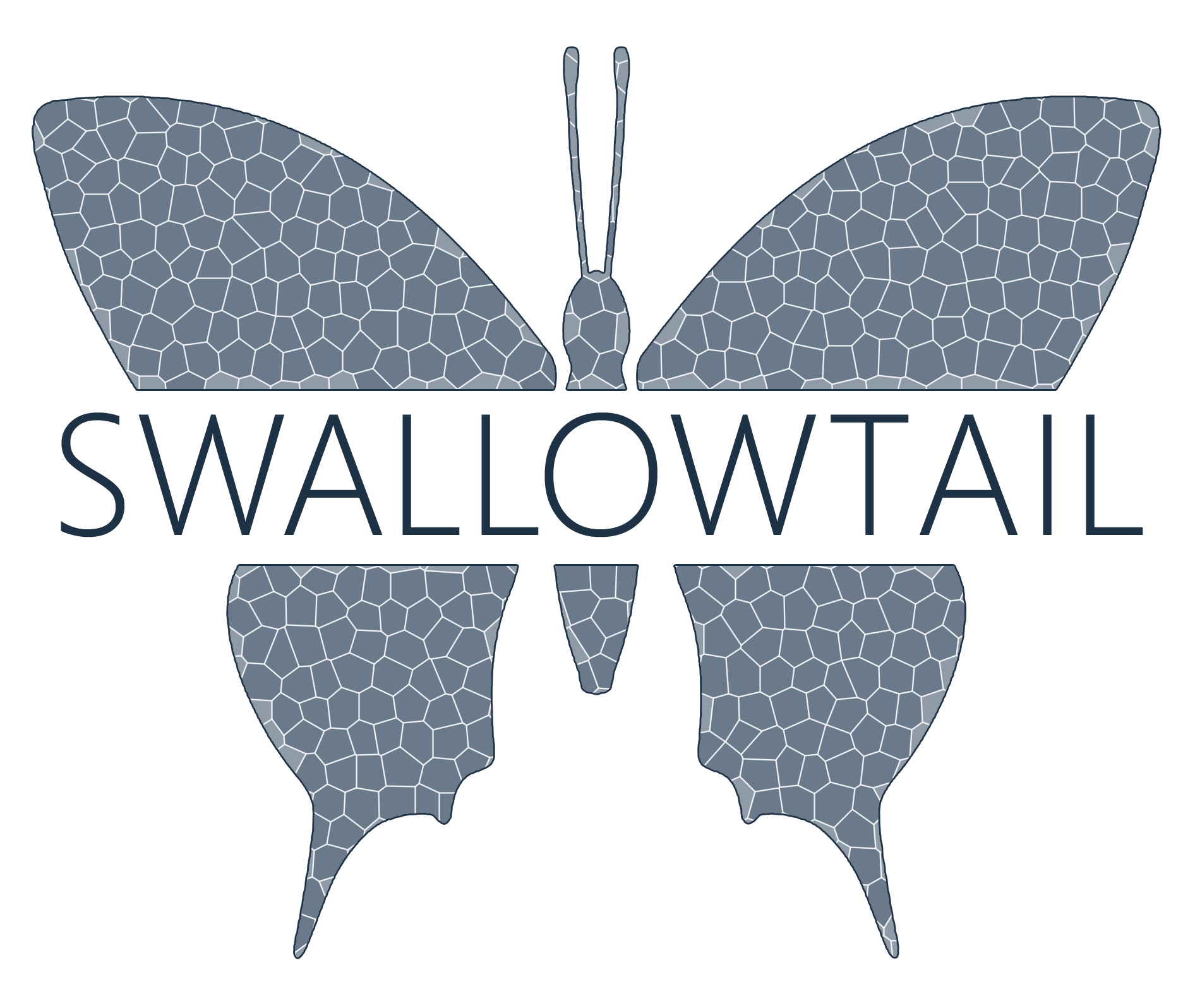
Landscape Recovery
Brecks Nature
Restoring nature in England’s biodiversity hotspot
Brecks Nature is a farmer-led Species Recovery Project in the heart of East Anglia
We are creating a connected landscape of over 400 square miles through partnerships with Forestry England and the Ministry of Defence.
We are currently seeking private investment alongside DEFRA to fund delivery over 20 years
Our Vision
Making space for nature in a farmed environment
Our 20-year project will revive and restore Nature in the Brecks through the recovery of priority and threatened species.
We will create new habitats, develop wildlife corridors, and bring chalk streams back to life, helping Nature to thrive across our farms - all while continuing to deliver some of the UK’s finest food.
Restoration of miles of chalk rivers and streams across 3 catchments
A network of 600 miles of species-rich arable margins, joining up high value habitats
Improved ecosystem services including maintenance of food production
Creation of 1400 hectares of rare Breckland habitats to support nearly 1000 priority species
A better experience for local communities and visitors in the Brecks landscape
The Brecks
The Brecks is a unique landscape of species-rich grasslands, conifer plantations and farmland characterised by low rainfall and sandy soils on the chalk plateau in central East Anglia
agriculture
33,000 hectares (33%) of the Brecks is owned and managed by 33 farmers committed to participate in the Landscape Recovery project.
share
Our strategic vision is informed by decades of pioneering research on the Biodiversity of the area, led by the University of East Anglia
groups
All the participating farmers in Brecks Nature are part of the 66 member-strong 53,000 hectare Breckland Farmers Wildlife Network
biotech
By working closely with the owners of Thetford Forest (FE) and Stanford Training Area (MOD) our project will create a Wildlife network of over 400 square miles
emoji_nature
72
2,149
12,856
The Brecks is home to
Species rarely found elsewhere in the UK
Priority species for conservation
Species of flora and fauna
Creating more of the habitats we know can support nearly 1000 priority species
Cultivated margins
Cultivated margins have proven to be one of the most beneficial and important agri-environment actions to support rare Brecks species.
Brecks fallow
Inspired by the 'Brecks' that gave the area its name, we are using these plots to restore a lost habitat that once provided a stronghold for many of Breckland's rarest species.
Scrub mosaic
Scrub-rich habitats have historically been undervalued by conservationists and farmers, but are increasingly recognised for their importance to wildlife.
Chalk river valleys
England's chalk streams are unique, and Breckland contains 19 chalk rivers and streams, around 8% of such rivers globally.
Grass-heath
Breckland's grass-heaths are habitats of European importance. Supporting many plant and invertebrate species found nowhere else in the UK.
A pioneering approach to species recovery
Research has built the foundation of our project, allowing us to take an evidence-led approach to restoring nature.
Targeting habitat placement by understanding where species thrive best
Working alongside the UEA we have used AI-driven machine-learning to train fine-scale species distribution models working with more than 3.5 million species records . This tells us where each of our target habitats will have the greatest biodiversity uplift, enabling us to balance the ecological and agricultural needs of the Brecks. We now have a series of ‘heat maps’ for each farm, advising the habitat potential for each field. Over time this will allow us to track species recovery and deliver verifiable uplift in biodiversity.
We are now working with a number of partners on solutions to ensure we have the highest integrity MRV (Measurement, Reporting and Verification) enhanced by technology
Brecks fallow
Grass-heath
Scrub mosaic
Cultivated margins
Working together across farms to join-up habitats at landscape scale
Natural Capital
Biodiversity Improvement
-
We are finalising exciting arrangements with a leading provider of verified Nature Credits, using science-driven baselining to develop a robust monitoring protocol recognising our unique approach to species recovery
Carbon Sequestration
-
We are working with a partner to baseline across the project area and assist farmers in increasing soil carbon across farmed land
Water quality
-
With plans to start work on priority river restoration areas in Year 1, we are in talks with partners about creating verifiable units from all three catchments in our project area. On the Lark catchment we are working closely with Anglian Water to support and enhance their plans on this Priority river.
eco
Primary among these is food production from Brecks farmland.
During the 20th century greater levels of irrigation and application of fertilisers enabled land managers to create large areas of highly productive farmland, mostly for vegetables, cereals and some livestock. Farmers in the area are adopting many different approaches to the challenge of maintaining food production that is financially and environmentally sustainable.
A key aim of Brecks Nature is to ensure high levels of food production are maintained alongside targeted interventions to ensure Nature’s Recovery. This is being achieved through a remarkable level of cooperation within the Brecks.
Overflowing opportunities for ecosystem services
Measuring our impact
Monitoring by farmers and volunteers
Regular sampling across multiple sites
Rapid feedback for adaptive habitat management
Engaging the local community
Monitoring by professionals
Bespoke survey methodologies
Will allow for creation of high integrity units (combined with farmer/volunteer measurement)
Supported by emerging technology solutions
Team
Richard Evans
Lead Farmer, Company DirectorRichard has worked in the Brecks for 43 years and has a livestock business based on a small Breckland farm alongside the river Thet. Grazing river valleys, heaths and other sensitive sites, as well as integrating into arable systems, has enabled conversations with other farmers to gradually build up into the organisation which is now BFWN.
Lucy Hatcher
Project Manager and Group AdvisorWith a degree in Conservation Ecology Lucy has focused her career on farmland biodiversity. Prior to joining the project team Lucy worked as an agri-environment scheme and protected sites adviser at Natural England. She was instrumental in creating some of the most ambitious farmland conservation plans with land managers in the Brecks, alongside being responsible for the largest farmland SSSI in England.
Pip Goodwin
Project manager and group coordinatorPip has a Master’s degree in environmental law and spent the past decade working in the RSPB’s Policy & Advocacy department, latterly as a Senior Policy Officer focused on the introduction of legally binding targets for biodiversity in the Environment Act. She recently spent two terms as a trustee of Suffolk Wildlife Trust and continues her voluntary monitoring role with Plantlife’s Breckland Flora Group.
John Secker
AdvisorJohn is a naturalist and conservationist living and working on a farm on the western edge of the Brecks. Building on an early interest in surveying and monitoring birds for the Forestry Commission, he moved into monitoring rare Breckland plant populations for the Breckland Flora Group. He has become a specialist in developing ‘cultivated arable margins’ which can support as many as sixty species. As a direct result, seventeen threatened Turtle doves were recently seen feeding together in the margins. John’s knowledge has been invaluable to the Brecks Nature project, demonstrating the remarkable results that can be achieved with no reduction in agricultural output for farms
Our partners













